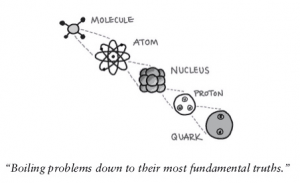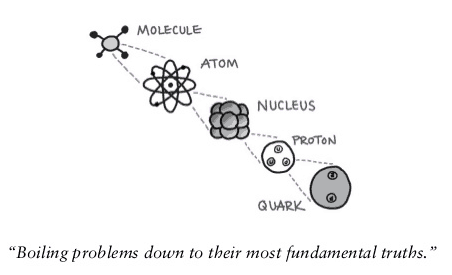
In this post, you will understand the concepts of first principles and first principles thinking based on physics concepts. Let’s jump in right away. In the meanwhile, you could also access one of my other posts on the first principles: First-principles thinking explained with examples. It will help you get started on what are first principles and what is first principle thinking.
One of the most fundamental Physics concept to understand the first principle is this:
- Every physical quantity can be represented as the derived quantity or fundamental quantity.
- The fundamental quantities, also termed basic quantity, are most basic or fundamental and unique and there are no overlaps between them.
- The derived quantities can be derived as a function of one or more fundamental quantities.
- There are only seven fundamental quantities. They are length, mass, time, current, luminous intensity, thermodynamic temperature, and amount of substance.
- Every other physical quantity can be termed as derived quantities. For example, speed can be derived from distance and time. Speed is distance/time. Note that distance can be measured in form of length.
Recall that the first principles are the propositions or assumptions which can not be derived further from any other proposition or assumption. Here is an image that can help you quickly understand the concepts of first principle thinking. As per the image given below, once you have broken down the molecule into the most elementary particle such as Quark, you could combine these elementary particles in unique and innovative ways to come up with new molecules.

Fig 1. First Principles Thinking
Now, come back to the definition of fundamental quantities. These are physical quantities that can’t be derived from any other physical quantities. Ain’t you observing some similarities?
As you could represent the derived physical quantities (every physical quantity except seven fundamental quantities) as a function of fundamental quantities, so you could represent every problem as a function of a combination of the first principle. And, once you have deduced the problem as a set of first principles, you could then rearrange the first principles to innovate and come up with unique solutions.
- Three Approaches to Creating AI Agents: Code Examples - June 27, 2025
- What is Embodied AI? Explained with Examples - May 11, 2025
- Retrieval Augmented Generation (RAG) & LLM: Examples - February 15, 2025
I found it very helpful. However the differences are not too understandable for me